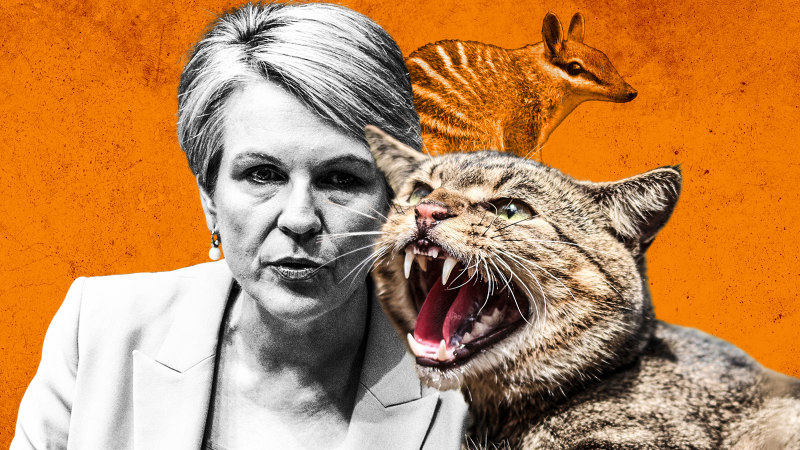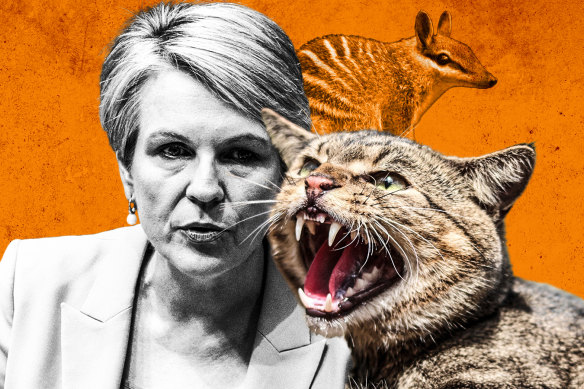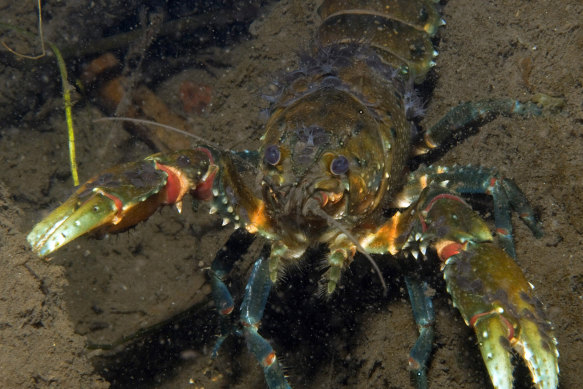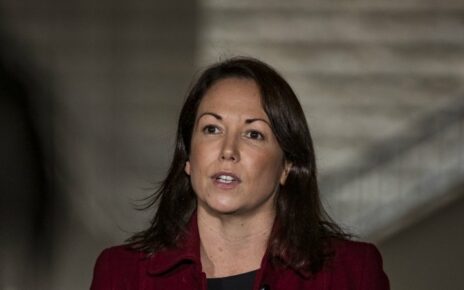Save articles for later
Add articles to your saved list and come back to them any time.
Another 48 native species including butterflies, geckos and crayfish have been added to Australia’s list of wildlife at risk of annihilation, spurring a new plan to cut the deadly feral cat population and exposing the challenge of delivering the government’s pledge to stop extinctions.
The draft cat plan released by Environment Minister Tanya Plibersek to mark National Threatened Species Day on Thursday is “declaring war on feral cats”. Her first step is seeking feedback on curfews for pet cats to be inside at night, desexing requirements and a household limit on number of cats.
Environment Minister Tanya Plibersek is developing a new plan to tackle feral cats as the list of native wildlife threatened with extinction grows. Credit:
Australia is a world leader in wildlife losses. Since colonisation, about 100 of the country’s unique flora and fauna species have become extinct, with untold losses of invertebrates. The rate of loss has not slowed over the past 200 years.
Feral animals such as wild cats and dogs are key drivers of native wildlife losses, along with habitat loss through land-clearing and development.
The unprecedented extent and severity of the 2019-20 Black Summer bushfires on the eastern seaboard have emerged as drivers of the latest endangered listings.
National laws in the Environment Protection and Biodiversity Conservation Act list categories for threatened species, ranging from conservation-dependent to extinct.
A vulnerable listing recognises that a species faces a high risk of extinction in the medium term. An endangered listing means a species is at very high risk of extinction in the short term, while a critically endangered species is at extremely high risk.
Among the new listings is the bulloak jewel butterfly from south-east Queensland, which is now listed as critically endangered. Kate’s leaf-tailed Gecko from northern NSW is endangered and the small-flowered snottygobble from Western Australia is critically endangered.
Sixteen species of freshwater crayfish native to the eastern seaboard which were not previously recognised as threatened are now listed under various stages of peril due to bushfires ravaging their habitats in wet gullies and creeks.
16 species of freshwater crayfish have been added to the threatened species list. Credit: J. Finn, Museum Victoria.
Plibersek declared last year that there would be no more extinctions on her watch, but experts have warned that conservation is a fraction of what is required to reverse wildlife losses.
She is releasing recovery plans for the maugean skate, swift parrot, native macadamia and the yirrkoo (water mouse) in the form of government guidelines to protect populations and habitats and reduce threats.
The draft cat management plan also suggests expanding the network of cat-free fenced areas and island havens as well as trialling feral cat shooting programs, increasing use of baiting and exploring options to euthanise cats caught in the wild.
Roaming pet cats kill 546 million animals a year in Australia, 323 million of which are native animals, according to research by the Australian National University conducted for the Biodiversity Council, Invasive Species Council and Birdlife Australia.
Plibersek said without action, native animals stood no chance of survival.
“[Cats] were the primary cause of Australia’s two latest extinctions. And they are one of the main reasons Australia is the mammal extinction capital of the world,” she said.
“I want to see a feral cat-free Australia. If we are serious about protecting our precious threatened species, then we have to tackle one of their biggest killers.
“We are declaring war on feral cats. And … we are setting up our battle plan to win that war,” she said.
The draft plan is open for consultation until December.
Cat ownership rules vary around the country. In Victoria, councils can order cat owners to keep pets inside during specific hours. Last year, the Australian Capital Territory began a district-wide curfew for cats bought after July 1.
NSW and Western Australia remain the only states that have no restrictions.
In NSW, 14 councils – including Hornsby Shire Council, Blue Mountains Council and Wollongong City Council – have supported the introduction of stricter regulation since 2018.
Cut through the noise of federal politics with news, views and expert analysis from Jacqueline Maley. Subscribers can sign up to our weekly Inside Politics newsletter here.
Most Viewed in Politics
From our partners
Source: Read Full Article




